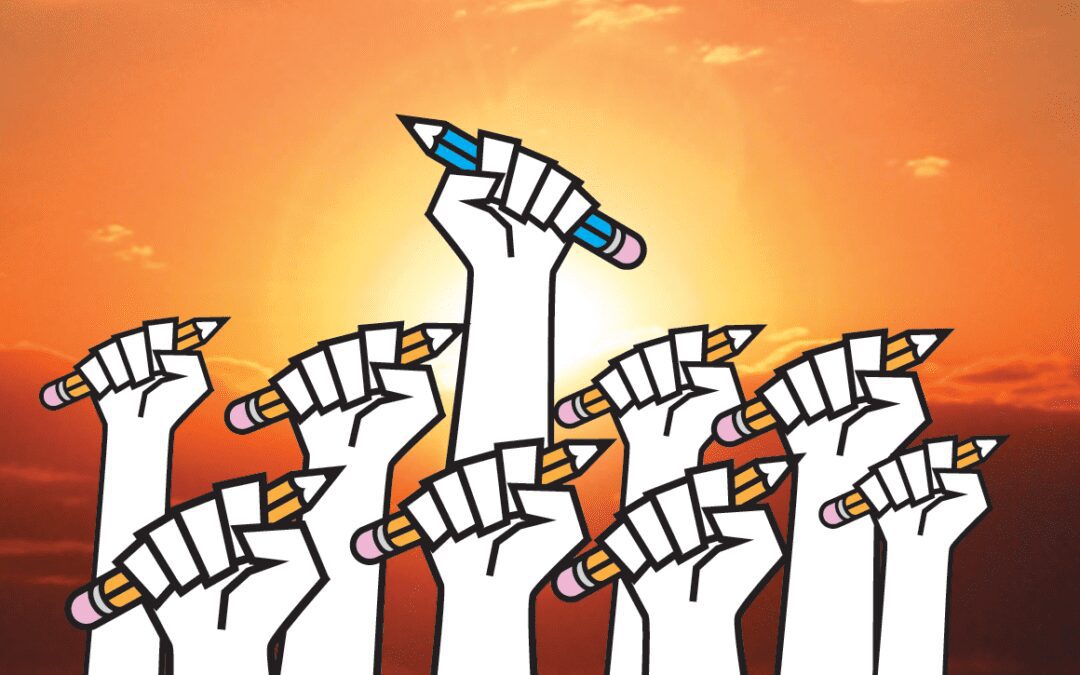It seems as though graphic designers are a dime a dozen these days. Competition is fierce, and everyone is vying for their piece of the proverbial pie. It is a blessing and a curse for the small business owner looking for someone to do graphic design work. Having options is always great. However, finding that diamond in the rough—the graphic designer that stands out from the crowd and suits your needs best—takes a bit of research and interviewing. This is why I have come up with 4 questions to use to interview your graphic designer.
As a small business owner or solo entrepreneur, you need to trust the person offering you a service. This trust is not something that comes easy to anyone with their own business. To rely on anyone else to help with something you’ve poured your blood, sweat and tears into is scary. After all, you’ve had to take on all the responsibilities of being the person in charge. However, being a marketer, accountant, purchaser, salesman, IT specialist, graphic designer, and every other part of the business can prove to be too much for most people. Realizing your strengths and shortcomings can help you decide where to focus your time and effort most effectively.
4 Interview Questions for Your Graphic Designer
I understand the things that run through a business owner’s mind when outsourcing anything, let alone graphic design. Will the contractor comprehend your desired intentions? Will they be as attentive and careful in working for your company as you were in building it? Is the cost going to be worth it? Can I get this somewhere else for less? Can I do most of this myself?
You can answer these questions during your first meeting with a graphic designer and by checking out their work online. However, preparing a list of critical questions to ask your potential graphic designer will help you make this significant decision.
1) How did you become a graphic designer?
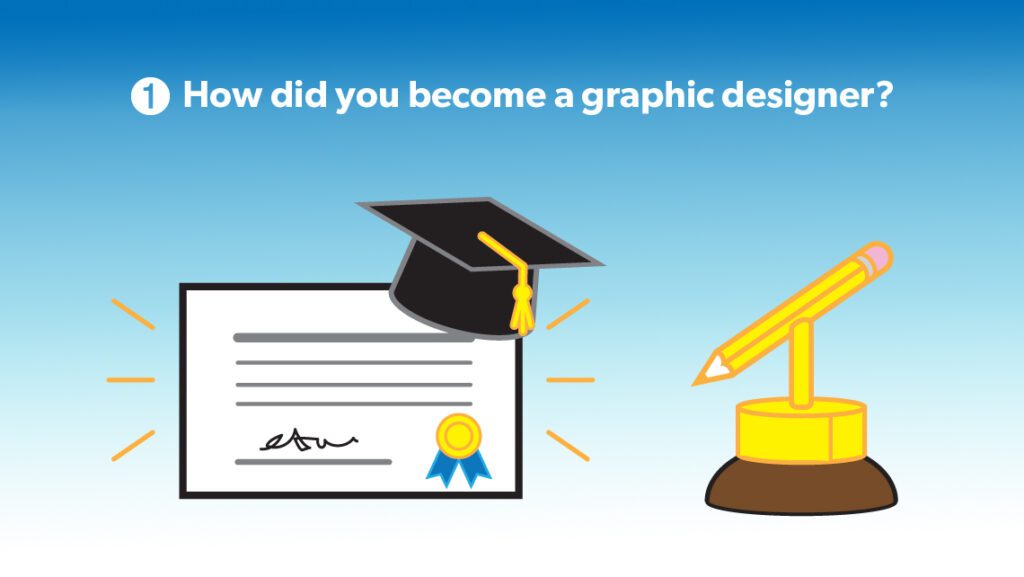
The answer to this question should tell you about the designer’s educational background. Some schools in Canada are affiliated with the Graphic Designers of Canada (GDC) and the Registered Graphic Designers (RGD). Both The GDC and RGD serve as professional governing bodies with codes of ethics and goals of elevating the graphic design profession while advocating its value to society. Not every graphic designer is a member of these professional groups. However, their certification should come from a partner school with a recognized graphic design program. Knowing the educational background of your graphic designer is an assurance that their work should be original, professional and warrantied. Self-taught graphic designers can be just as good as those with post-secondary training. Still, they may not have all the knowledge necessary to make the same assurances.
2) Where might I have seen some of your work? (Where can I see some of your work?)
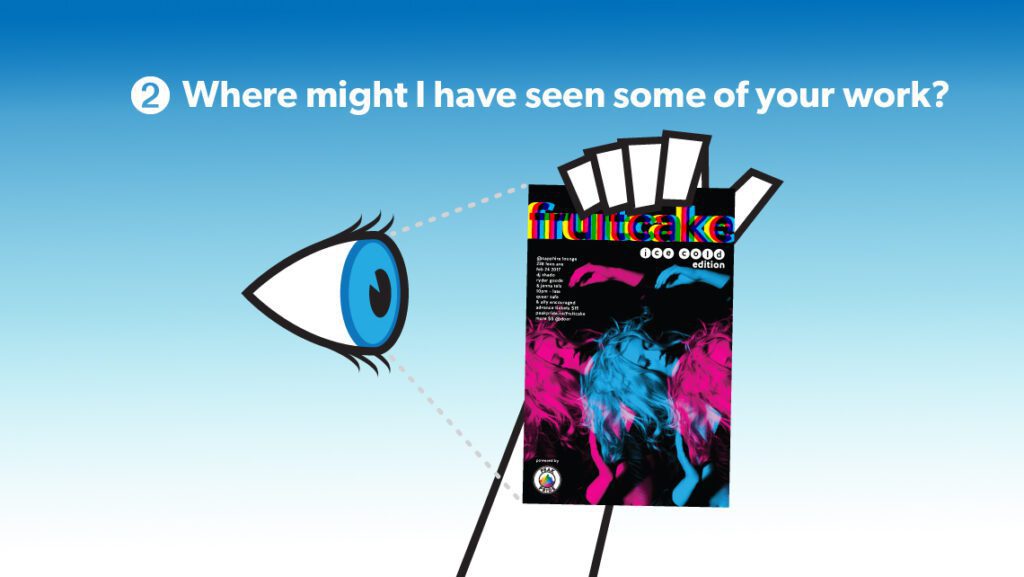
The answer to this question will tell you how much experience your designer has outside of school. Most designers will inform you of the projects they were most proud to work on and lead you to view their portfolio online. New graphic designers will likely have a collection of student work to show and rationales to back up their design choices. It is important to note that a graphic designer with real-world experience is highly valued and will likely cost more. However, if you believe in giving people their professional start, you may contact a recent grad. Remembering that an instructor usually directs student work that guides the creative process would be best. The more a student can tell you about their work, the more they understand what their designs accomplish.
Recent Work
This question should also lead to a conversation about recent work and a quick look through a graphic design portfolio. If you aren’t impressed with a graphic designer’s work, don’t work with them. It is that simple. However, if you feel you haven’t seen enough work to decide, feel free to ask to see more work samples. An experienced graphic designer should have several pieces that relate to the kind of work you are offering.
No Speculative Work, Please.
Never ask a graphic designer to create a design for you for free to decide on hiring them. While some graphic designers might take you up on the offer, this practice is “spec work” that most professional graphic designers won’t do. You wouldn’t expect a hairstylist to give you a haircut for free on the off-chance that you might employ them in the future to do your hair–the same goes for graphic designers. You can read more about spec work and how it impacts creative professionals at www.nospec.com.
3) What is your design process (when starting a new project)?
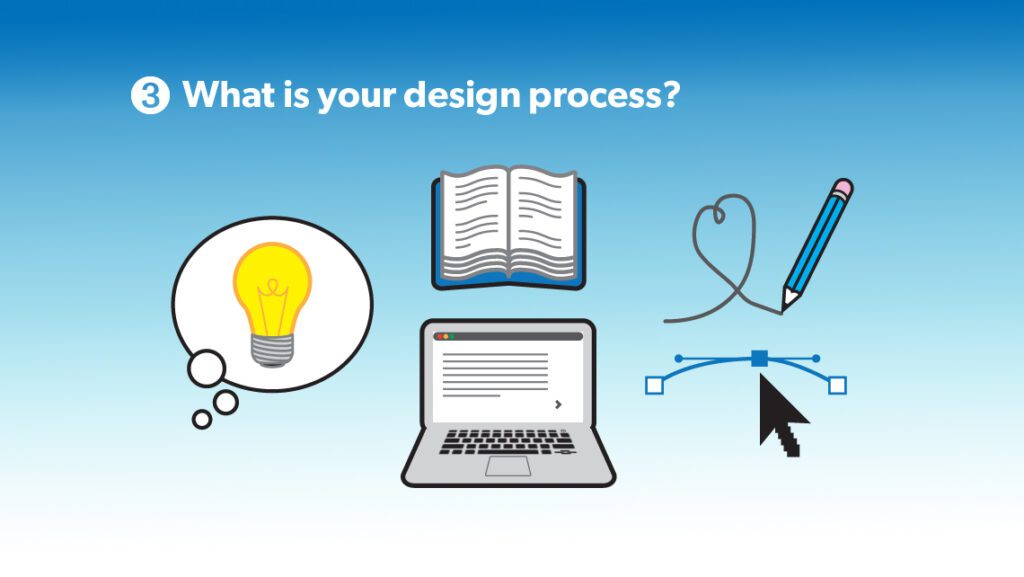
When you ask this question, you are looking for an answer about the process that involves listening to your requests and taking feedback to complete a design. Involving you in the core design decisions means the research and development phase will create informed concepts. You want someone who will provide viable options in early concept development and further refinement as you make design decisions and give feedback.
Not all design projects require a lengthy process. However, knowing the steps involved in starting a new project will let you know how much care is taken to ensure that you get the designs that work for you. (I will discuss the sound design process vs. the cost in a later post).
4) What are your rates?
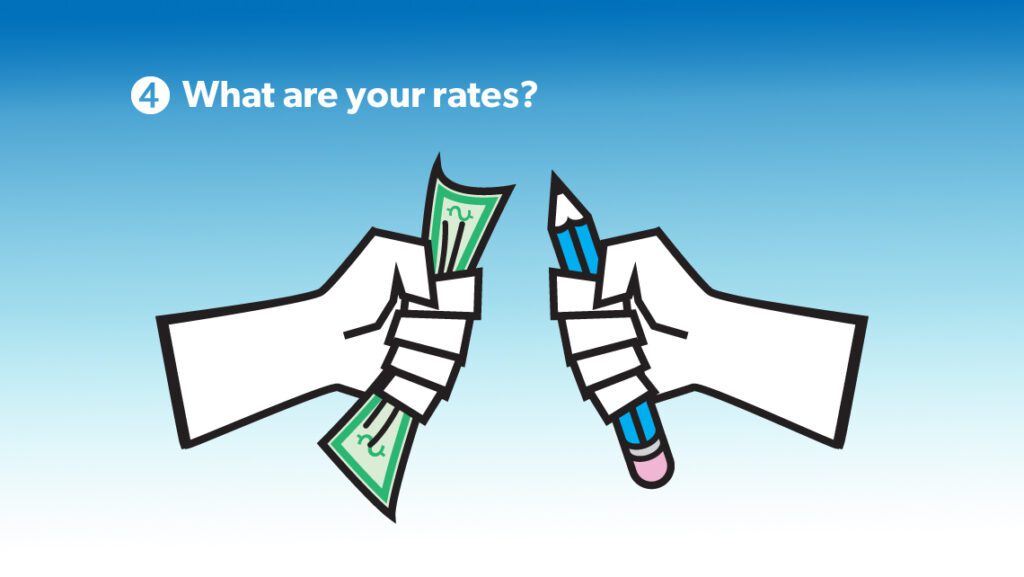
Lastly, discussing budget and money upfront when you interview your graphic designer is important. You are looking for someone who will be upfront with you about payment expectations and varying pay rates. You want to set clear expectations, or else you may open a dialogue for negotiation.
Hourly Rates
Most graphic designers have an hourly rate based on their years of experience, capabilities, work quality, and the local market. Some graphic designers will even have flat rates for specific projects like logo design and visual identity packages. Some designers will also negotiate lower rates if the work spans several weeks of full-time employment or if you arrange a retainer agreement. You can also expect rates to change based on how you will use the designs and whether or not you need all rights to the graphics in perpetuity. Finally, don’t be afraid to ask how many rounds of feedback you get with the project fees and what to expect if a project requires more changes than estimated.
Print Management
It is also essential to ask if your graphic designer will handle printing or if that aspect of the project is up to you to arrange. Graphic design fees are generally for the design only unless you express the need for print management upfront. Most graphic designers will charge a markup for managing the printing. However, your designer will usually have a printer they trust in mind to ensure the print work turns out all right. You are taking a gamble when you leave your graphic designer out of the printing process. Even if you want control of who does your printing, it is beneficial to arrange for your designer and printer to communicate directly.
Project Management
Most design professionals will be truthful about their expertise and have partners they trust to do the work they are not experts at doing. This work can be anything from web design to search engine optimization (SEO). However, when your designer is responsible for an entire project that includes work from outside their wheelhouse, there may be a markup attached to services for special projects. In addition, if one or more third parties work together on a project, you could expect to pay a project management fee. On the plus side, when your designer works with other professionals they trust, they work efficiently within their area of expertise.
However, if you were to find other third-party professionals to work with your designer, there is a chance it might cost more—the extra cost results from an inevitable get-to-know-you period that may hold up the project. This is why finding a designer you can trust to be upfront about project management and all possible costs incurred on a project is critical. Bringing strangers together to work on a project can also lead to unforeseen problems like clashing personalities and miscommunication.
What is your budget?
Be prepared to have questions about rates and fees thrown back to you. Specifically, the question “What is your budget?” will usually be asked. This question is not a way of probing you for big bucks but gauging your limits and whether your terms would be agreeable for the project in question. If your budget is way off the mark, the conversation will change. Your designer will let you know what they can do for you and what they will do for that price. Your budget is likely to be accepted if it is close to the value of the project. It is usually an excellent place to finish the interview after discussing fees. You’ll want to exchange information or let your candidate know your decision.
Final Thoughts
When your potential graphic designer has answered these questions, you have a good feel for their graphic design expertise, ability, aesthetic, process, costs and demeanour. You may want to interview your graphic designer a bit more. Be sure to add a few questions about your specific project. Above all, you need to be able to say, “I am confident I can work with this person.” Someone you hire to work for you needs to be someone that is a good fit. All other answers to your questions would be moot otherwise. All that said, you should be ready to discuss contracts and be well on your way to seeing your ideas brought to life by your chosen graphic designer.
Need more advice on creating an effective logo? Connect with me through my Cyan Bold Design website or read my blog series, What Does Your Logo Say About You?

